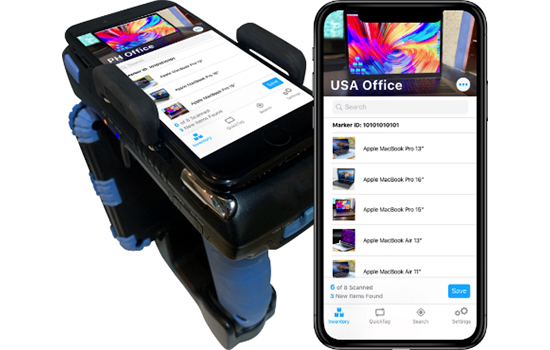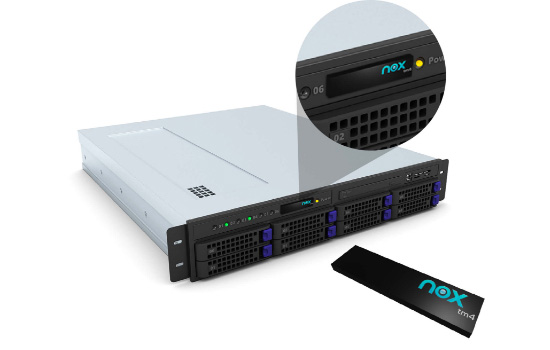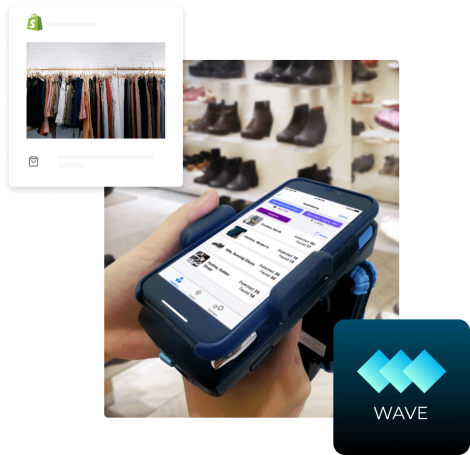Supply Chain Operational Visibility? That's RFID.

THE PROBLEM
As a small company, even SimplyRFiD has its issues managing inventory. We ship 10-20 orders daily. Each order may have 1 to 100 SKU's included. Since we manufacture RFID systems and maintain UL compliance, we must account for everything from the correct bolts and washers to the latest RFID modules. To maintain UL certification, we must record every part we build into a system.
To manage all this, we built our system -- "DinoData (Dinosaur Data)" -- for our internal tracking.
We tried to use several off-the-shelf (COTS) systems. We used Netsuite for years. Eventually, the cost of NetSuite was just too much to bear. It was also very cumbersome, and we still needed external tools to capture all the details. We tested a few others. The problem with COTS products is they either require extensive customization (Netsuite, SAP, Oracle) or don't do what we need.
So, you're probably facing the same issues with your supply chain. How do you count it up? How do you know the parts are there?
We tried several ideas.
Hand Count
Initially, we didn't tag our inventory at all and hand-counted items. Hand counting led to some wild inventory reports. Eventually, our best method was: Print out the previous report. Show the expected number next to it (if we sold 5, we expect inventory to decrease by 5). Someone counts the inventory. If they are off by 1-2 items, they leave it alone and turn in the report. If there are more significant discrepancies, they do a little more searching before accepting the number.
We examine the missing items and decide if it's a miss-ship (did we send too many parts to a customer? Did someone get it for 'free'?) Did R&D take it and not fill out the proper requisition?
But, mostly, we adjust our numbers, so we have enough inventory to fulfill orders. Unless there is a high-theft item, there is rarely anything we can investigate.
Barcodes
Our next step was printing barcodes for received goods.
The advantage: When we ship, we can scan a barcode and know we pulled the correct part. Barcodes work great for 20' cables that look just like 15' cables. We started to bag-and-tag everything to ensure we received, tested, and accepted inventory. We had to do this to meet ISO and UL standards and certifications.
But it didn't help us with our inventory counts.

THE SOLUTION
For small stuff (bolts), we capture everything by lot # (purchase date) and weight. For larger items (RFID Modules, Intel NUC's), we track specific serial numbers. Generally, our cut-off is around $25 before we move from weight to item level.
Today we must manually apply RFID tags to our serialized inventory.
Labor cost to receive an item into inventory is at least $1, so adding a 15 cent RFID tag is negligible and reduces inventory time to seconds.
Manual labor isn't so bad as we need to receive, test/QA, and place items into inventory regardless of an inventory visibility solution. Labor cost to receive an item is at least $1. We add a 15 cent RFID tag
Our inventory receipt cost goes from $1.00 to $1.15. A 15% increase in receiving cost. But, this initial cost is paid back in two areas:
-
Inventory Speed.
-
Solving our miss-ships, R&D losses (parts removed from inventory without a requisition), and shrinkage.
That 15 cent tag pays for itself over-and-over.
Cost Savings for RFID
Audit time - Inventory
- Assuming the loaded rate for an operations admin: $60
- 3,000 items in inventory
| Audit | Time | Cost |
|---|---|---|
| Barcode @ 15 seconds per tag | 12.5 Hours | $720 per inventory |
| RFID @ 10 tags per second | 5 minutes | $5 per inventory event |
RFID saves you about $700 per inventory event.
Total Savings
How much will you save adding RFID into a quality process?
| Audit Frequency | Yearly Savings |
|---|---|
| Daily | $255,000 |
| Weekly | $36,400* |
| Monthly | $8,400 |
| Quarterly | $2,800 |
| Yearly | $700 |
Of course, this is on a small scale. The point is: Even small companies like SimplyRFiD can see savings, and it makes them better than their competitors by ensuring they have stock on-hand and fresh inventory.
One more point to re-make: Once you move to a 100% quality product, the step of tagging with RFID is nothing. If your current process is to receive/sell but not verify, then RFID is a costly process to add. It's not for everyone, but if you are running an ISO / UL certified facility, you will be QA'ing and validating everything you do.
if you are running an ISO / UL certified facility, you will be QA'ing and validating everything you do.
We typically do an inventory every-other-week. That's a lot! Our savings per-year with RFID $15,000 to $20,000 for the inventory portion alone.
Other Benefits: Shrink, Miss-Ships, and more
The second benefit of RFID is in the continuous monitoring of inventory.
Fixing Miss Ships
With RFID, we can see every order shipped. The Pogi server stores an event for every item placed into a shipping box. We link this to a video feed. When we are 'short' 3 items on an inventory, we put the RFID number of the missing item into PAWN and retrieve the last-known location.
If we see it was "last seen" in shipping, we pull the video footage and see 'who had it, what were they doing with it?'
For SimplyRFiD, it's rare to have a theft issue. RFID parts just aren't that interesting. However, we have customers that ship 300 laptops a week. We have a lot of stories about the creative ways their product is diverted. RFID puts a stop to that.
Our NOX system focused on using RFID and video to stop diversion.

THE PROCESS
Every company will have a slightly different process. Here's ours:
- Goods are received against PO and quarantined
- Process into inventory. Inspected, tagged, and added to our system. The tag associates the RFID to the item to the SKU to the original delivery and PO.
- Stored as inventory, tagged, and ready.
- As needed, we pull as close to FIFO as we can. Anything from the same PO is fair-game. We use our Handheld to verify we grabbed the most recent goods.
- For sale items are placed into the shipment queue. If it's part of a BOM for a system, it's added to the BOM list for parts traceability.
RFID Tags
We typically use our TR800 tags. The TR800 RFID tag is low-cost with high-performance. It only works on plastics and cardboards. If we need to tag a metal part, we usually use our TM4 on-metal RFID tags.
Auditing
We use our Wave handheld for auditing inventory. We compare the expected values in our internal ERP (DinoData) with our count. These should flow from costing to sales orders to our bottom line inventory.
Anything 'missing', we try to figure out where it went. Usually, engineering permanently borrowed it if it's not accounted for. We update our actual numbers in our ERP with an internal sale report (if we know where it went) or an inventory loss. If we later find the item (this happens -- RFID isn't perfect), we have all the data and can re-add to inventory.
Other thoughts on visibility
Shipping
We have been playing with ways to make this helpful to customers. We currently track in-progress orders and orders sitting on the UPS dock for pickup using a passive RAIN RFID visibility system. Our visibility system, Pogi, tells customers with absolute certainty: Your order is packed, and on the dock. We can even tell when UPS picks up the order before UPS updates their tracking.
WIP
We haven't implemented WIP RFID systems in our manufacturing, but one of our customers uses it in their "Class Ring" manufacturing process. They process thousands of rings daily, allowing them to track time-at-station for each step of making a custom ring and locating a specific ring in a production run to pull it from the chain if there is a job issue.

